GENERAL
What Is Cannabitol: Unveiling the New Frontier in Hemp Wellness
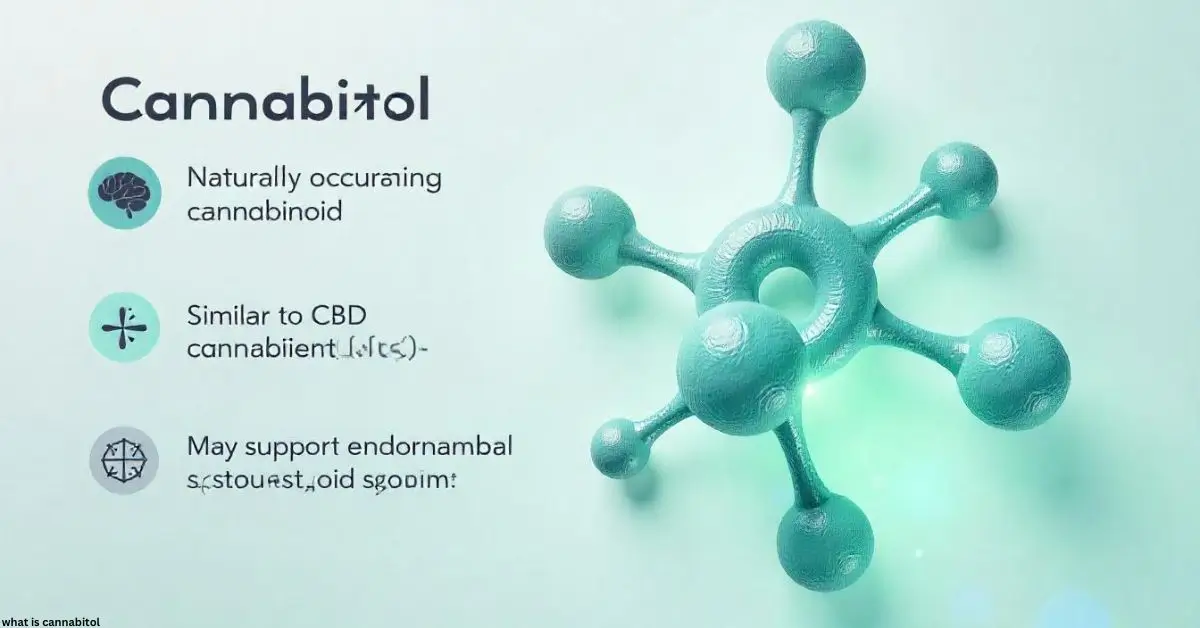
What is cannabitol? This question is gaining attention across wellness, nutrition, and cannabis industries as this lesser-known compound makes its debut in niche cannabinoid products. With curiosity rising around this rare hemp derivative, it’s time to explore what sets cannabitol apart and why it might become the next big breakthrough in natural health solutions.
Understanding What is Cannabitol: What are The Basics
Cannabitol—often abbreviated as CBT—is a minor cannabinoid found in very small amounts in hemp and cannabis plants. Unlike mainstream compounds such as CBD (cannabidiol) or THC (tetrahydrocannabinol), cannabitol is far less studied but is emerging as a potentially valuable addition to cannabinoid-based health and wellness products.
This compound is formed through oxidative processes during the degradation of other cannabinoids like THC. Over time, or through intentional laboratory methods, cannabitol becomes stable and isolatable, allowing researchers to study its unique effects.
How Is Cannabitol Extracted?
Due to its minimal natural occurrence, extracting cannabitol is more complex than isolating major cannabinoids. Manufacturers rely on high-performance liquid chromatography (HPLC) or molecular distillation to isolate CBT from the plant matrix or cannabinoid-rich distillates. These high-precision methods ensure the purity and potency of the final product.
This complexity contributes to the high cost and low availability of cannabitol-based products on the market, making it a premium option among cannabinoid enthusiasts.
Comparing Cannabitol With Other Cannabinoids
Many people confuse cannabitol with more popular cannabinoids. To understand what is cannabitol, it’s important to compare it side-by-side with others:
| Feature | Cannabitol (CBT) | CBD | THC | CBN | CBG |
| Cost | High | Medium | Variable | Medium | Medium |
| Efficiency | Under research | Widely verified | Psychoactive | Sleep support | Mood balance |
| Ease of Use | Softgels, oils | Oils, gummies | Vapes, edibles | Capsules, oils | Topicals, oils |
| Scalability | Limited | High | High | Medium | Medium |
| Benefits | Sleep, clarity | Pain relief, calm | Euphoria, hunger | Rest, sedation | Focus, balance |
Health Benefits of Cannabitol
Even though research is still in the early stages, what is cannabitol believed to do in terms of wellness? Some potential benefits based on preliminary observations and anecdotal evidence include:
Improved Sleep Patterns
Many early adopters of CBT products claim it helps induce sleep naturally without lingering grogginess. Its calming influence is ideal for those struggling with insomnia or restlessness.
Antioxidant Properties
Researchers believe cannabitol may have antioxidant potential, helping to counteract oxidative stress—a leading cause of cellular damage and early aging.
Anti-Inflammatory Support
Like many cannabinoids, cannabitol may reduce inflammation markers in the body, making it useful for people with muscle soreness or chronic inflammatory conditions.
Non-Psychoactive
Unlike THC, cannabitol does not cause a high, allowing users to experience benefits without mental impairment or euphoria.
Neuroprotection (Under Study)
Though research is limited, some speculate CBT might help regulate neural inflammation, possibly aiding brain health and cognitive longevity.
Forms of Cannabitol Products
As more people ask “what is cannabitol used for,” the market has responded with several product types, including:
- Oils and tinctures: Fast-absorbing and easy to dose.
- Capsules and softgels: Ideal for consistency and travel.
- Topicals: Used for localized pain or inflammation.
- Vape concentrates: Limited availability but offer rapid effects.
Manufacturers often blend cannabitol with other cannabinoids or herbal extracts to enhance effects and support targeted benefits.
Who Can Benefit from Cannabitol?
You might consider cannabitol if you:
- Are sensitive to THC or other cannabinoids
- Seek improved sleep quality
- Want antioxidant protection
- Are exploring non-traditional supplements
- Prefer compounds that are non-psychoactive
Cannabitol and the Endocannabinoid System
The endocannabinoid system (ECS) plays a crucial role in maintaining internal balance—regulating mood, appetite, immune response, and more. Though cannabitol doesn’t bind as directly to CB1 or CB2 receptors as THC or CBD, it may modulate receptor sensitivity and influence ECS tone over time.
This indirect interaction may explain its calming and restorative effects without overstimulation or sedation.
Legal Status of Cannabitol
So, is cannabitol legal? The answer depends on the source of extraction and local regulations:
- If extracted from hemp with <0.3% THC, it’s generally legal under federal U.S. law.
- Some states and countries may have specific restrictions, especially around novel cannabinoids.
Always check regional guidelines before purchasing or consuming any cannabitol product.
Cannabitol in the Wellness Industry
As industry experts continue to study novel hemp compounds, many are looking into cannabitol as a possible functional wellness supplement. Unlike CBD—which has exploded in popularity—CBT is being marketed to high-end, informed consumers seeking targeted benefits.
Innovative brands are creating synergistic formulas combining CBT with CBD, CBN, or CBG to amplify the entourage effect—a phenomenon where multiple cannabinoids work better together than alone.
Is Cannabitol Safe?
To date, there are no serious adverse events linked with cannabitol use. However, like all supplements, individual reactions may vary.
Reported side effects include:
- Dry mouth
- Mild dizziness
- Upset stomach
- Fatigue at high doses
To minimize risks, it’s recommended to:
- Start with a low dose
- Consult a healthcare provider
- Choose lab-tested products
Storage and Shelf Life
Understanding how to store cannabinoid products is key to maintaining potency. Cannabitol should be stored in a cool, dark place—preferably in airtight glass containers to avoid light and oxygen exposure, which can degrade the compound.
Proper storage may extend the shelf life to over a year without significant loss of effectiveness.
The Growing Appeal of Cannabitol
The question “what is cannabitol” no longer belongs to niche researchers alone. Health-conscious consumers, sleep enthusiasts, and those with chronic inflammation are all beginning to explore its potential.
As the minor cannabinoid space grows, more attention is being directed toward standardization, quality assurance, and clinical trials. These developments will help build trust and offer better clarity on dosing and effectiveness.
The Science and the Future
Although still early in its research life cycle, cannabitol shows promise. Its non-intoxicating profile, possible antioxidant benefits, and broad compatibility with other cannabinoids make it a fascinating area of future study.
Product developers and pharmaceutical researchers are currently working on delivery formats that could enhance its bioavailability and stability, including nanoemulsions and encapsulation techniques.
Conclusion
Understanding what is cannabitol gives us a deeper appreciation for the complexity and potential of the hemp plant. While not yet mainstream, cannabitol is carving out a unique space among wellness seekers, offering potential benefits without psychoactive effects. Whether you’re aiming for better sleep, reduced inflammation, or improved antioxidant support, cannabitol is a promising tool in the evolving world of hemp-based wellness. Approach it with curiosity, and always ensure your source is reputable and transparent.
FAQs
What is cannabitol mainly used for?
Cannabitol is primarily used for promoting better sleep, reducing inflammation, and offering antioxidant support. It’s also used in wellness products for its calming properties.
Is cannabitol the same as THC?
No, cannabitol is a distinct compound from THC. It does not cause intoxication or euphoria, making it suitable for those avoiding psychoactive effects.
Can cannabitol improve sleep?
Yes, many users report that cannabitol supports restful sleep without grogginess. However, more research is needed to confirm these claims scientifically.
How often can I take cannabitol?
Most products recommend daily use, but the exact dosage depends on the formulation. It’s best to start low and increase gradually while observing your body’s response.
Is cannabitol safe for long-term use?
There’s no evidence suggesting long-term harm, but due to limited studies, long-term safety isn’t fully established. Consult a healthcare provider for guidance.
Does cannabitol interact with medications?
Like other cannabinoids, cannabitol may interact with medications that affect liver enzymes. Always consult a medical professional before combining with prescription drugs.
GENERAL
What Are Guinness Calories? Simple Nutrition Facts 2025
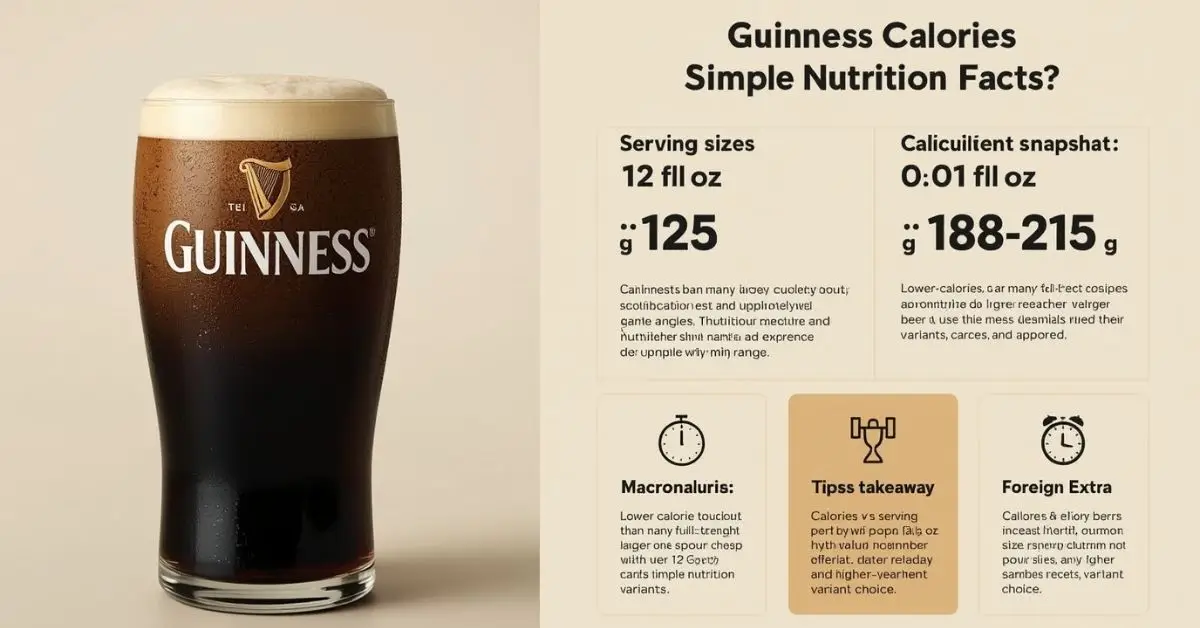
Ever wonder if your beloved pint is sneaking in more calories than you’d like? You’ve been there. I’ll help you understand [guinness calories] the smart way—no fluff, just real-world facts and easy clarity.
Quick Answer
A pint (16 oz) of Guinness Draught has about 210 calories (about 35 kcal per 100 ml). Calories come mainly from alcohol and carbs. Simple, direct, no guesswork.
What’s in a 12-oz Guinness Draught?
This tells you exactly what’s in a standard serving.
You’ll learn the facts fast:
- 12 oz (~355 ml) of Guinness Draught has 125 calories (Alcohol 11.2 g, carbs 10 g).
- That’s ~35 kcal per 100 ml for Guinness Draught or Extra Stout. A full pint rounds to ~210 calories total.
Key Intake: A full pint = ~210 kcal; most calories come from alcohol.
How Do Variants Stack Up?
See how different types compare no guessing here.
| Variant | Calories (per 12 oz) | Key Notes |
| Draught | ~125 kcal | Standard, smooth |
| Foreign Extra Stout | ~194 kcal | Rich, roasty |
| Baltimore Blonde Lager | ~167 kcal | Hoppy, lighter |
| Guinness Smooth (per 100 ml) | ~57 kcal (~217 kcal pint) |
Key Intake: Higher ABV = more calories. Pick the one that fits your macro budget.
Why Calories Vary Breakdown by Source

Learn where the calories come from, not just numbers.
- Alcohol has 7 kcal per gram; in Draught, ~62% of calories are from alcohol.
- Carbs add the rest—around 10 g in a 12-oz Draught (~40 kcal).
Key Intake: Calories split roughly 60% alcohol, 40% carbs.
Non-Alcoholic and Low-Cal Alternatives
Find choices when you want flavor without the calorie hit.
- Guinness 0: only 17 kcal per 100 ml (≈ 68 kcal per pint).
- Good picks if you’re tracking macros or avoiding alcohol.
Key Intake: Guinness 0 is a clever low-calorie swap for your pint fix.
What This Means for Dieters & Health-Mindful Drinkers
A quick guide to fit Guinness into your nutrition plan.
- A pint ~ 210 kcal is moderate—less than many craft ales (160–180 kcal).
- If counting macros, know: alcohol is the main calorie source.
Key Intake: It’s not “diet-friendly” but moderate and trackable.
Final Takeaway
This isn’t sugar-coated. If you’re watching your calories, understanding “guinness calories” means choosing wisely, knowing exactly what’s in your pint, and fitting it into your wellness plan like a smart decision, not a hidden cost.
FAQ’s
How many calories are in a pint of Guinness?
~210 kcal per pint, based on ~35 kcal per 100 ml.
What’s the calorie content of a 12-oz Guinness Draught vs Extra Stout?
Draught ~125 kcal; Extra Stout ~180–194 kcal.
Are there lower-calorie alternatives to Guinness stout?
Yes—Guinness 0 has only ~17 kcal per 100 ml (≈ 68 kcal per pint).
Guinness calories vs Bud Light: which is lower?
Guinness Draught (~125 kcal) is similar or slightly higher than Bud Light (~110 kcal).
How many calories per gram of alcohol are in Guinness?
Alcohol contributes 7 kcal per gram; ~60% of calories in Draught come from alcohol.
Calories in Guinness Draught nutritional facts explained?
~125 kcal from alcohol (78 kcal) + carbs (~40 kcal), plus ~1 g protein.
Is Guinness high in calories for a diet plan?
It’s moderate; track it, and it can fit in but be mindful of alcohol calories.
Expert Citations
- Healthline: Detailed breakdown of calories from alcohol vs carbs in Guinness Draught.
- Guinness.com: Official calorie counts across variants (Draught, Extra Stout, 0.0, etc.).
- Guinness product pages: Precise nutrition data for each variant – Draught, Foreign Extra Stout, Blonde, Smooth, etc.
GENERAL
Why the Rory Masters Collapse Still Matters Today (2025)

Golf can be cruel. One minute you’re leading the Masters, the next you’re fighting to hold it together. Rory Masters collapse moments have given fans drama, heartbreak, and unforgettable TV.
We’ve all seen it happen, the missed shots, the tense body language, the scoreboard slipping away. But why does it happen to a player as good as Rory McIlroy? Let’s break it down.
Quick Answer
The Rory Masters collapse refers to multiple high-profile moments at Augusta where Rory McIlroy lost his lead, most famously in 2011 when he shot 80 in the final round, and again in 2025 with late-round bogeys. Causes include mental pressure, course difficulty, and external distractions like slow play. Yet, Rory has also turned these failures into motivation, ultimately winning the Masters in 2025 to complete his career Grand Slam.
Rory McIlroy: Masters Career Profile
| Category | Details |
| Name | Rory McIlroy |
| Date of Birth | May 4, 1989 (age 36) (ESPN.com) |
| Hometown | Holywood, Northern Ireland (ESPN.com) |
| Turned Pro | 2007 (ESPN.com) |
| Masters Titles | 2025 (First win; career Grand Slam completed) (Reuters, The Washington Post) |
| Notable Collapses at Masters | 2011 final-round meltdown (80, from 4-shot lead) (Wikipedia) |
| Masters Attempts Before Win | 17 attempts at Augusta by 2025 (The Sun) |
| Other Major Wins | U.S. Open 2011, PGA Championship 2012 & 2014, Open Championship 2014 (Data Golf, Wikipedia, Reuters) |
| Total Career Wins (2025) | 44 total: 29 PGA Tour, 18 European Tour, others (Talksport) |
| Career Grand Slam | Achieved with 2025 Masters win; one of six to do so (Reuters, Talksport) |
| Signature Moment | Emotional collapse to celebrating Green Jacket after playoff win vs. Justin Rose (The Washington Post) |
| Key Strengths | Multiple Majors, career Grand Slam, long-time world No.1 (European Tour, Reuters) |
| Resilience & Legacy | Climbed back from 2011 collapse to claim Masters, completing a decade-long quest (The Scottish Sun, Reuters) |
2011 The Collapse That Started It All
The first big Rory Masters collapse came in 2011.
- Rory led by four shots after three rounds.
- On Sunday, Augusta’s pressure took over.
- He shot an 80 and finished tied for 15th.
2025 A New Collapse, Same Augusta Pressure
Fast forward to 2025. Rory was 4-under through 14 holes in Round 1.
- Then came bogeys on 15 and 16.
- A double bogey on 17 sealed the damage.
Paul McGinley, former Ryder Cup captain, called it a slow play distraction McIlroy couldn’t shake. This wasn’t the first time Rory felt Augusta’s mental toll.
Why Collapses Happen at Augusta
Definition:
Mental collapse in golf Majors is when focus, rhythm, and execution fall apart under tournament stress.
Augusta National tests more than swing mechanics. It pushes the mind to breaking point.
Key factors:
- Course design: punishes tiny errors.
- Crowd energy: amplifies every mistake.
- Mental game: pressure spikes near the finish.
Rory’s Redemption 2025 Masters Win
Here’s the twist: despite the early stumble, Rory fought back. By Sunday evening, he wore the green jacket.
- He became only the 6th golfer to complete the career Grand Slam delay McIlroy had chased for over a decade.
- His win proved collapse doesn’t have to define you.
What Fans and Players Can Learn
- Stay present: Focus on one shot at a time.
- Adapt fast: Don’t let a bad hole become a bad round.
- Pressure prep: Simulate high-stakes moments in practice.
Real-world note:
I’ve seen players choke in local tournaments because they never practiced the mental side. Rory’s story shows why it matters.
FAQs
Why is Rory McIlroy’s Masters collapse famous?
It’s remembered for how quickly a winning position turned into a blowout, especially in 2011 when he led by four shots.
How many times has Rory collapsed at the Masters?
At least twice in high-profile ways — 2011’s final-round meltdown and the 2025 early-round stumble.
What caused Rory’s 2025 collapse?
Analysts point to mental pressure and slow play distractions from his group.
Has Rory ever recovered from a Masters collapse?
Yes. He won the Masters in 2025, securing his career Grand Slam.
Expert Citations
- Paul McGinley — TalkSport: “Slow play affected Rory’s rhythm.”
- Golf.com — “Analyst says slow play led to Rory’s Masters collapse.”
- Wall Street Journal — “McIlroy completes career Grand Slam with 2025 Masters win.”
GENERAL
What to Know About Johnny Depp Island in the Bahamas

You’re curious, and honestly—so am I. What’s it like to own a slice of Caribbean magic, hidden away from prying eyes? Especially when that slice belongs to a Hollywood legend. Let’s cut through the noise and get real.
Quick Answer
Johnny Depp’s Island is called Little Hall’s Pond Cay. He bought it in 2004 for about $3.6 million. It spans roughly 45 acres and is 60 miles southeast of Nassau in the Bahamas. He still owns it as of mid-2025.
Where is Johnny Depp’s Island located?
Here’s what you’ll learn: Its geography, how big it is, and where it sits in paradise.
- Located in the Exuma Islands, Bahamas, about 60 miles southeast of Nassau (Tuko.co.ke – Kenya News, Market Realist, News).
- Covers roughly 45 acres (18 hectares), a sizable tropical property with six beaches (Tuko.co.ke – Kenya News, Newszetu).
It’s a mid-size tropical hideaway, a boat-ride from Nassau. Pure, quiet, untouched.
What’s the story behind its name and purchase?
Here’s what you’ll learn: Why Johnny Depp bought it, what he named parts of it, and how he transformed it.
- Johnny Depp Island was discovered while filming Pirates of the Caribbean. He bought it in 2004 for about $3.6 million (Vanity Fair, News, Homes & Gardens).
- The six beaches are named after his loved ones and mentors—Gonzo (Hunter S. Thompson), Lily Rose, Jack, Brando (Marlon Brando), and Paradis (Vanessa Paradis) (Vanity Fair, Market Realist, People.com).
- He built a ranch-style main house with 360° views, solar-powered guest structures, a bamboo yurt, and a beach house—low-key luxury meets eco-sensitivity (DDW, Tinseltown Tales, DMARGE, CEO Today).
What makes it a sanctuary—and does Depp still own it?
Here’s what you’ll learn: Why it’s meaningful to Johnny Depp and if he still owns it.
- Depp calls Johnny Depp Island “pure and beautiful” and says you can feel your “pulse drop” there—instant freedom (Vanity Fair, Newszetu, Tinseltown Tales).
- As of mid-2025, he still owns it despite rumors of a sale to J.K. Rowling (CEO Today).
Celebrity & luxury context
Here’s what you’ll learn: How it fits with celeb real-estate and pop culture.
- Johnny Depp Island sits among other Bahamas celebrity islands, near properties owned by Eddie Murphy and David Copperfield (Tuko.co.ke – Kenya News).
- The island has hosted Depp’s wedding to Amber Heard in 2015 and served as a detox retreat during difficult times (Glamour, DMARGE, Market Realist).
Takeaway
From celebrity news readers to luxury travellers to real-estate enthusiasts, Little Hall’s Pond Cay—better known as Johnny Depp Island—is a rare, personal hideout that blends Depp’s eclectic style with genuine peace. Based on real-world reports and Depp’s own words, this island is more than property—it’s sanctuary.
FAQ’s
Where is Johnny Depp’s island located?
A private island called Little Hall’s Pond Cay, in the Exuma chain, 60 miles southeast of Nassau, Bahamas.
What is the name of Johnny Depp’s private island?
It’s called Little Hall’s Pond Cay.
How much did Johnny Depp’s island cost?
He bought it for around $3.6 million in 2004.
Can you visit Johnny Depp’s island in the Bahamas?
No—access is strictly by invitation only.
What’s the history of Johnny Depp’s Little Hall’s Pond Cay?
He discovered it during Pirates of the Caribbean filming, bought it, built eco-homes, and still owns it as of 2025.
What are some luxury aspects similar to this island?
Think celebrity-owned private islands—secluded, bespoke retreats designed for quiet, high-end living.
Expert Sources
- Vanity Fair – Their coverage on Johnny Depp Island includes direct quotes and historical context from the actor himself. (vanityfair.com)
- People Magazine – Their article on Johnny Depp Island offers fact-checked property details and insider background. (people.com)
- Homes & Gardens – A respected home and lifestyle publication that provides credible real-estate insights, including luxury property features and valuations for celebrity-owned estates. (homesandgardens.com)
-
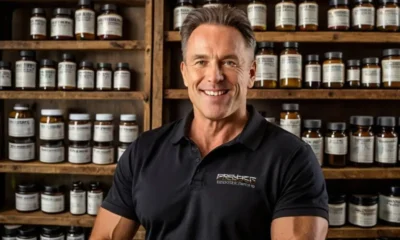
 GENERAL3 months ago
GENERAL3 months agoGary Brecka Supplements: Unlocking Peak Human Performance
-

 GENERAL2 months ago
GENERAL2 months agoActivia Yogurt Nutrition Facts You Shouldn’t Ignore
-
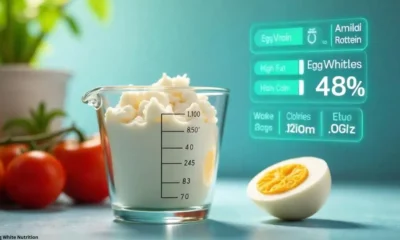
 HEALTHY DIET3 months ago
HEALTHY DIET3 months ago1 Cup Egg White Nutrition: Protein Powerhouse for Optimal Health
-
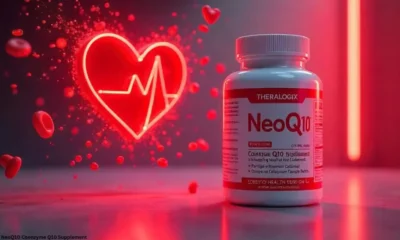
 HEART TIPS3 months ago
HEART TIPS3 months agoTheralogix NeoQ10 Coenzyme Q10 Supplement – Heart Health
-

 GENERAL3 months ago
GENERAL3 months ago12 oz Coke Nutrition Facts: What’s Really Inside?
-

 HEART TIPS2 months ago
HEART TIPS2 months agoCommon Heart Home Health: Trusted Cardiac Care at Home
-
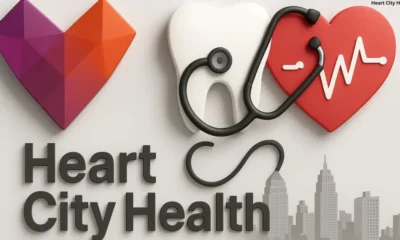
 GENERAL2 months ago
GENERAL2 months agoHeart City Health Dental: Expert Care for Every Smile
-

 GENERAL3 months ago
GENERAL3 months agoHealthy Living at Home for a Better You
